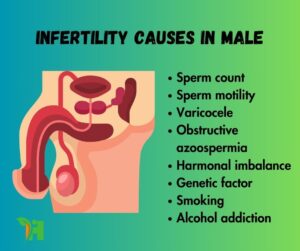What Are the 4 Determinants of Health? A Comprehensive Guide
Introduction (What Are the 4 Determinants of Health? A Comprehensive Guide):-Health is not determined solely by access to healthcare or the absence of disease. It is a complex interplay of multiple factors that influence our well-being throughout our lives. Understanding these factors is essential for individuals, communities, and policymakers aiming to improve health outcomes and reduce health disparities.
Among the various frameworks developed to understand health influences, one of the most recognized is the concept of the “4 Determinants of Health.” These include:
- Social and Economic Environment
- Physical Environment
- Individual Behavior
- Genetics and Biology
In this comprehensive guide, we will explore each of these determinants in detail, discuss their impact on health, and offer insights into how they can be addressed through effective interventions and policies.

1. Social and Economic Environment
The social and economic environment encompasses the conditions in which people are born, grow, work, live, and age. These factors have a profound impact on health outcomes and contribute significantly to health inequities.
What Are the 4 Determinants of Health? A Comprehensive Guide
Key Components:
- Education: Higher levels of education are associated with better health outcomes, healthier lifestyles, and longer life expectancy. Education provides individuals with the knowledge and skills to make informed health choices.
- Employment and Income: Stable employment and adequate income enable access to healthy food, safe housing, and healthcare services. Economic insecurity and unemployment can lead to stress, mental health issues, and chronic diseases.
- Social Support Networks: Strong family ties and community connections can buffer stress and promote psychological well-being. Social isolation, on the other hand, is linked to a higher risk of mortality.
- Cultural Norms and Socioeconomic Policies: Cultural attitudes toward health, healthcare policies, and socioeconomic support systems can greatly influence population health.
Impact on Health: Numerous studies show that people with lower socioeconomic status often face worse health outcomes. For example, individuals in impoverished neighborhoods may lack access to quality education and job opportunities, leading to a cycle of poor health.
Strategies for Improvement:
- Investing in early childhood education
- Creating job training programs
- Expanding access to affordable housing
- Strengthening social safety nets
2. Physical Environment (What Are the 4 Determinants of Health? A Comprehensive Guide)
The physical environment refers to the natural and built surroundings in which we live, work, and play. This includes everything from air and water quality to housing and infrastructure.
Key Components:
- Air and Water Quality: Exposure to pollutants can cause respiratory and cardiovascular diseases. Clean air and safe drinking water are fundamental to good health.
- Housing Conditions: Overcrowded or poorly maintained housing can lead to injuries, asthma, and infectious diseases.
- Workplace Safety: Safe working conditions help prevent accidents and reduce exposure to hazardous substances.
- Access to Recreational Areas: Availability of parks and recreational facilities promotes physical activity and mental well-being.
- Transportation and Urban Design: Public transportation systems and walkable neighborhoods contribute to reduced traffic injuries and encourage active lifestyles.
Impact on Health: Individuals living in environments with poor air quality, contaminated water, or unsafe housing are at increased risk of developing chronic diseases, infections, and mental health issues.
Strategies for Improvement: (What Are the 4 Determinants of Health? A Comprehensive Guide)
- Implementing stricter environmental regulations
- Promoting green spaces and active transport
- Improving housing standards and urban planning
- Monitoring and addressing pollution sources
3. Individual Behavior
Individual behavior refers to the choices and habits that people develop throughout their lives. While genetics and environment play significant roles, personal behavior often determines how those factors impact health.
Key Components:
- Diet and Nutrition: Eating a balanced diet helps maintain a healthy weight and reduces the risk of chronic diseases like diabetes and heart disease.
- Physical Activity: Regular exercise strengthens the heart, improves mood, and enhances overall well-being.
- Substance Use: Smoking, alcohol abuse, and drug use are major contributors to poor health outcomes.
- Sleep Patterns: Inadequate or poor-quality sleep is linked to obesity, diabetes, depression, and cardiovascular problems.
- Preventive Care: Attending regular health check-ups, vaccinations, and screenings can prevent or manage diseases effectively.
Impact on Health: Unhealthy behaviors are among the leading causes of premature death. For example, tobacco use remains the single most preventable cause of death globally.
Strategies for Improvement: (What Are the 4 Determinants of Health? A Comprehensive Guide)
- Health education and awareness campaigns
- Community-based wellness programs
- Behavioral interventions and counseling
- Policy changes like tobacco taxes and food labeling
4. Genetics and Biology (What Are the 4 Determinants of Health? A Comprehensive Guide)
Genetics and biology encompass the hereditary factors and physiological functions that contribute to health and disease. While these are often beyond individual control, understanding them helps in prevention and personalized care.
Key Components:
- Genetic Predisposition: Some individuals are genetically predisposed to certain conditions such as cancer, diabetes, or heart disease.
- Age and Sex: Age-related changes and sex-based biological differences can influence disease susceptibility and health needs.
- Immune System Functioning: A robust immune system can protect against infections and manage chronic inflammation.
- Mental Health Conditions: Conditions like depression or anxiety may have a genetic component that affects brain chemistry and stress responses.
Impact on Health: While genetics can increase the risk of certain diseases, it rarely determines health outcomes alone. Lifestyle choices and environmental factors often modulate genetic risks.
Strategies for Improvement:
- Genetic counseling and testing
- Personalized medicine and treatment plans
- Early screening for hereditary diseases
- Encouraging healthy lifestyles to mitigate genetic risks
The Interplay of Determinants
These four determinants do not act in isolation. They are deeply interconnected. For example, a person with a genetic predisposition to obesity may not develop the condition if they have access to healthy foods, safe places to exercise, and supportive social networks.
Public health interventions that address multiple determinants simultaneously tend to be more effective. For instance, tackling childhood obesity may involve:
- Educating families on nutrition (individual behavior)
- Ensuring access to playgrounds and safe sidewalks (physical environment)
- Supporting low-income families through food assistance programs (social and economic environment)
- Screening for genetic risk factors early (genetics and biology)
Conclusion (What Are the 4 Determinants of Health? A Comprehensive Guide)
Understanding the four determinants of health is crucial for designing comprehensive health strategies that go beyond treating illness. While individual responsibility plays a role, the broader context—social, economic, environmental, and genetic—shapes our opportunities and challenges.
To improve health outcomes at the population level, we must adopt a holistic approach that considers these interrelated factors. Policymakers, healthcare providers, educators, and community leaders all have roles to play in creating a healthier, more equitable society.
By acknowledging the complexity of health and targeting the root causes of poor outcomes, we can move toward a future where everyone has the opportunity to live a long, healthy, and fulfilling life.
Related Article



Follow us





